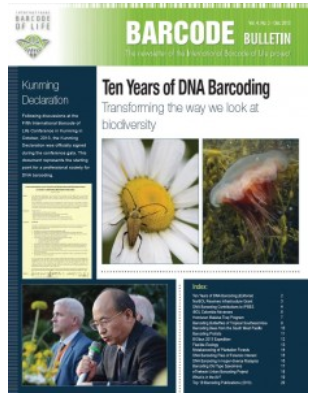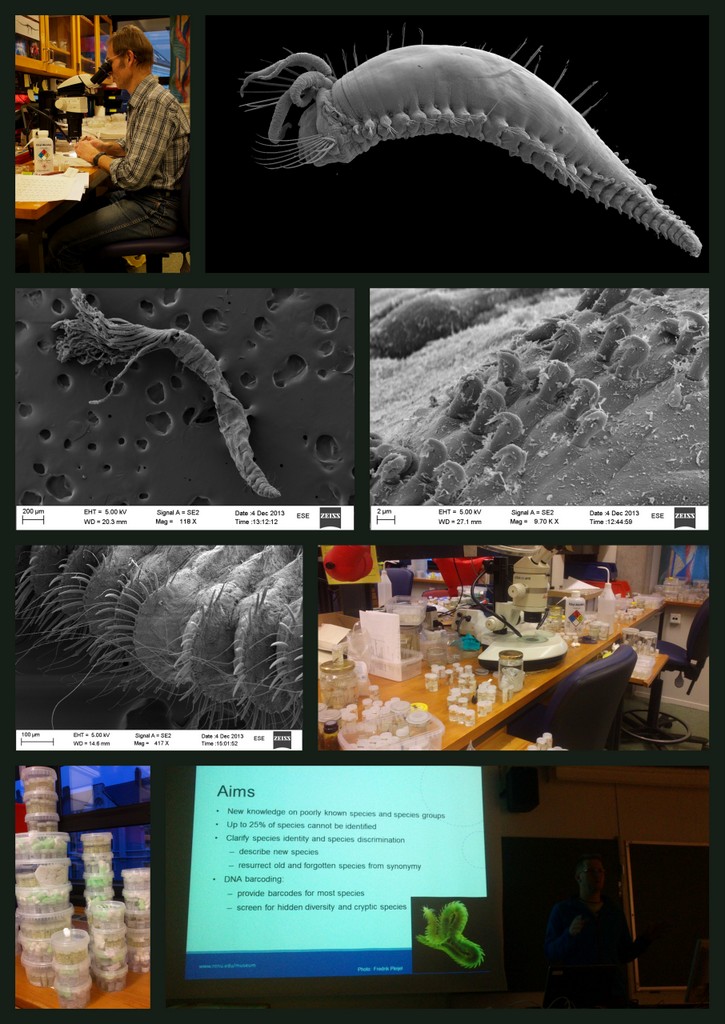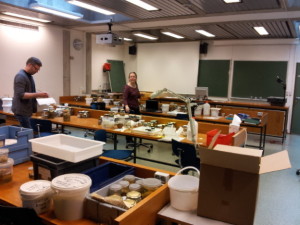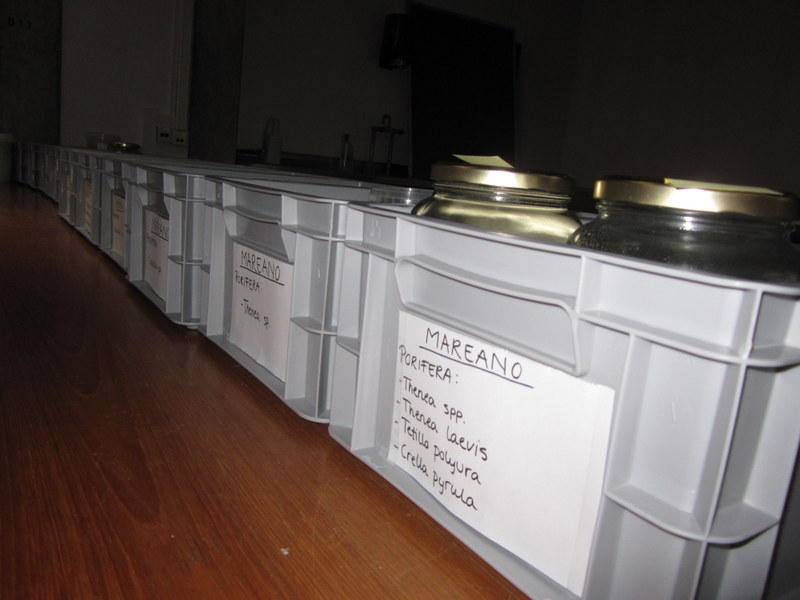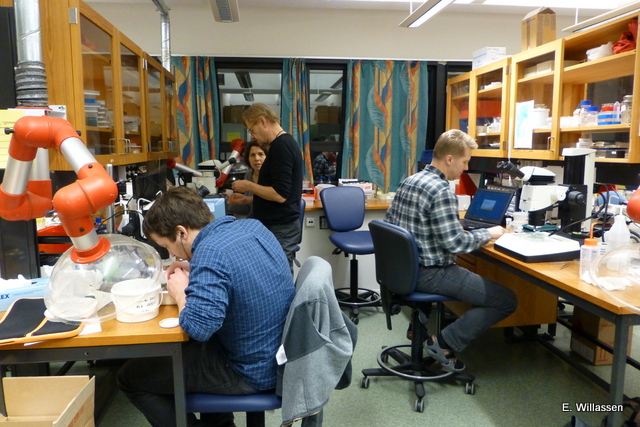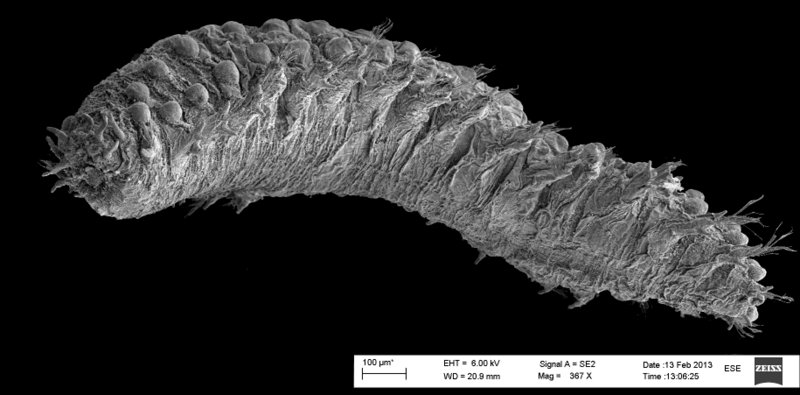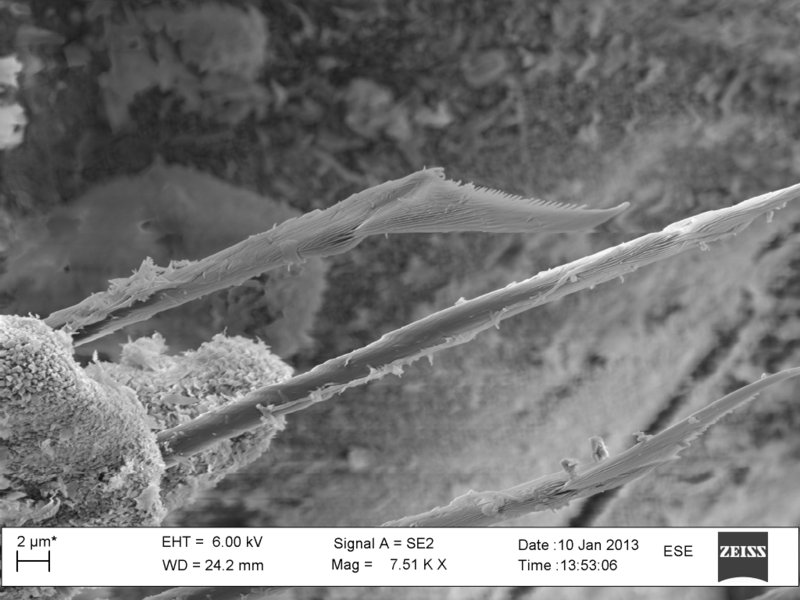Barcode Bulletin is a newsletter from International Barcode of Life (IBOL). Barcode Bulletin Vol. 4, No. 2 – December 2013 has recently published two stories about activites we are involved in. One nice piece of news is that the Norwegian Biodiversity Information Center and the Research Council of Norway has decided to fund the NorBol consortium. The other news are about our summer 2013 workshop in the MIWA-project which was co-funded via IPBES.
Category Archives: Workshops
More from the PolyNor workshop
As usual, we use a variety of methods to work with our animals – these include use of stereo microscope, “ordinary” microscope, and electron scanning microscope (SEM). Below are some pictures of work in progress during today.
PolyNor Workshop on the MAREANO material
This week our lab is teeming with activity as twelve researchers goes to work on our polychaete material, focusing mainly on that which has been collected by the MAREANO program.
As mentioned previously, the material collected by MAREANO gets split into size based fractions, which then receive different treatments. As far as the polychaetes go, MAREANO carries out routine identification on what is collected by grab (1 mm) and beam trawl (5 mm), all of which has been fixed in formalin (until this year, where it was begun fixing half of the beam trawl in ethanol). Thus we already have some idea of what to expect to find in the material.
At the Invertebrate Collections we have processed a lot of bulk samples from the fractions that MAREANO does not utilize, and lately we have especially focused on the Ethanol fixed material, as this can be used for genetic work.
This workshop is part of the Polychaete diversity in the Norwegian sea (PolyNor) project. This project aim to explore the diversity of polychaetes in the Nordic seas;
The Norwegian Sea holds a diverse fauna of polychaete worms, more diverse than previously anticipated. Recent work has discovered several new species and species described in the old literature but not seen since their description, has been rediscovered. Material from new samples will be targeted to discover the true diversity of polychaetes in the Norwegian Sea.
During the workshop we will work on some of the groups with especially tricky taxonomy, prioritizing the identifying of specimens fixed in ethanol, and select individuals that are especially suited for genetic work. And of course we will also discuss current topics, find and reconnect with collaborators, drink an unholy amount of coffee, and learn some new things!
World Congress of Malacology, Azores, July 2013
The World Congress of Malacology is the major scientific international meeting in the field of malacology (the study of molluscs) and takes place every third year.

Five of six delegates from the University Museum of Bergen. From left to right: Trond Oskars, Andrea Zamora, Christiane Todt, Manuel Malaquias, Lena Ohnheiser
This year the event was hosted by the University of the Azores in the island of São Miguel between the 21 and 28 of July. Over 400 enthusiastic scientists from all over the World gathered in the middle of the Atlantic Ocean to discuss during five days the latest advances in this science covering various aspects of phylogenetics, biodiversity, ecology, palaeontology, conservation, pest management, adaptations to extreme environments, biogeography, speciation, etc.

Trond Oskars (master student) presenting part of his master thesis on the systematics of cephalaspidean gastropods at the Opisthobranchs Symposium
A delegation from the University Museum comprised by six scientists and students have participated in the event, namely Christiane Todt (post-doctoral researcher), Lena Ohnheiser (research assistant), Andrea Zamora (PhD candidate), Nina Mikkelsen (PhD candidate), Trond Oskars (MSc. student), and Manuel Malaquias (assistant professor). In total, members of the University Museum were co-authors in 14 scientific contributions: four posters and 10 talks presented at the Aculifera and Opisthobranchs symposiums.
The next congress will take place in Penang, Malaysia in 2016 and we look forward for it!
Workshop on material from Western Africa
We’re spending the first two weeks of July out on our marine field station, running a workshop with participants from nine different countries on material from Western Africa. You can read more about this on our project blog: Marine Invertebrates of Western Africa
Sponges!
Meet catalogued specimen # 90.000
We recently rounded 90.000 specimens in our scientific collections, and since # 90 000 is such a good representative of what we are currently working on, we’re presenting it here.
This is a Cumacea, or hooded shrimp. It was collected by the MAREANO project. It was then identified by a taxonomist on a workshop arranged by the Department of Biology (UoB), the University Museum and MAREANO. It was then implemented in the Museum’s scientific collection, and chosen to be used as a DNA voucher for the NorBOLproject (Norwegian Barcode of Life). Here it will be part of a comprehensive library of standardized DNA sequences (barcodes) which will serve as a reference resource for the research and management of biodiversity in Norway.
Bioskag Workshop
We began the year with arranging two workshops in January. The first of these was based on the extensive sampling done in the Skagerrak strait in recent years (2006 – today). The aim was to increase the rather poor knowledge of the invertebrate fauna of the region (link is in Norwegian).
The focal group of this workshop was the Polychaetes (bristle worms), and through the effort of the ten attendants, a lot of material was examined. You can read more about this at the blog of the Norwegian Polychaete Forum.
We are currently processing the findings from the workshop, including documenting specimens through photography and drawing. One of the tools we employ for doing this is the scanning electron microscope (SEM), which enables us to make high resolution images at a very high magnification.

